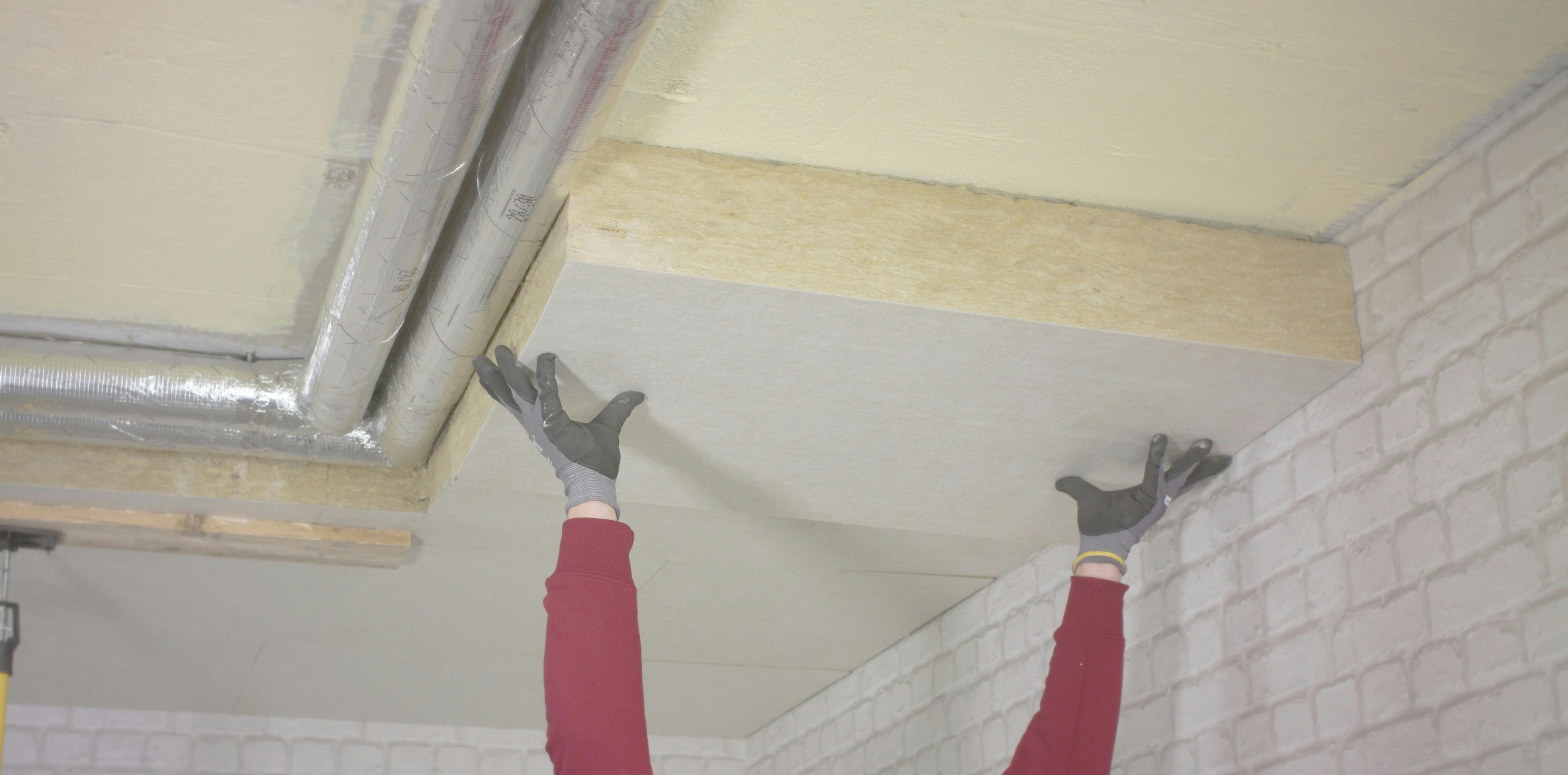Why do we need ceiling or soffit insulation?
As cool air rises, it will easily escape through an uninsulated ceiling/soffit. The same is true for both sound and fire.
Insulated ceiling panels, tiles and grid suspension systems – as well as our other forms of insulation products – can improve the thermal comfort, acoustic performance and fire safety of entire rooms and floors. For information on ceiling panels learn more about ROCKFON – part of the ROCKWOOL Group.
Buildings with internal insulation can deliver significant energy savings and greater thermal performance, making multi-storey developments comfortable for living and working1.
There are three main types of ceiling or soffit insulation:
- Car park ceiling – High density boards with an optional coating or wood-fibre finish that can be painted or plastered. Boards are glued or mechanically fixed to the ceiling. This enhances the ceiling’s aesthetics as well as its thermal, acoustic, and fire resilience – ideal for protecting properties above.
- Basement or cellar ceiling – Very similar to the car park ceiling products, but with a greater focus on domestic use and requirements.
- Suspended ceiling – Commonly used in intermediate floors, a new ceiling is created underneath the load bearing floor from a wooden or metal structure. Light weight rolls or slabs are applied to improve the thermal, acoustic, and fire performance.
Benefits of ROCKWOOL ceiling or soffit insulation include:
- Cool retention2 - stopping cool air from passing through a floor
- Acoustic absorption2 - eliminating long reverberation time
- Fire resilient properties3 - reducing the risk of a fire spreading
- Reduced energy bills – which can help alleviate financial issues associated with hot homes4






